Key takeaways:
- Mental strength combines emotional control, self-discipline, and resilience, crucial for success in breakdancing.
- Visualization and mindfulness are effective techniques for building confidence and managing performance anxiety.
- Embracing failure and shifting focus from comparison to self-appreciation are key strategies to overcome self-doubt in competitions.
- Consistent practice and mental rehearsal enhance resilience and prepare dancers for real-life challenges during battles.

Understanding mental strength
Mental strength is often misunderstood as simply being tough or resilient. However, I’ve learned that it encompasses a blend of emotional control, self-discipline, and the ability to push through adversity. I remember a time during a breakdancing competition when I stumbled on a major move—my heart sank, and I questioned my skills. Yet, it was that moment that taught me the power of regrouping and focusing on what I could control.
In the heat of competition, we often face not just physical challenges but also mental barriers. It’s about maintaining composure and believing in your preparation, even when doubts creep in. I recall feeling overwhelmed before a big performance, my mind racing with “What if?” thoughts. By flipping that into “I can,” I harnessed my mental resources, transforming anxiety into motivation.
Understanding mental strength is about building habits that fortify your mindset. I’ve found that regular visualization, where I see myself executing my routines flawlessly, reinforces my confidence. It begs the question: how often do we truly invest in our mental game? This commitment to mental strength can be the difference between competing and thriving on the dance floor.
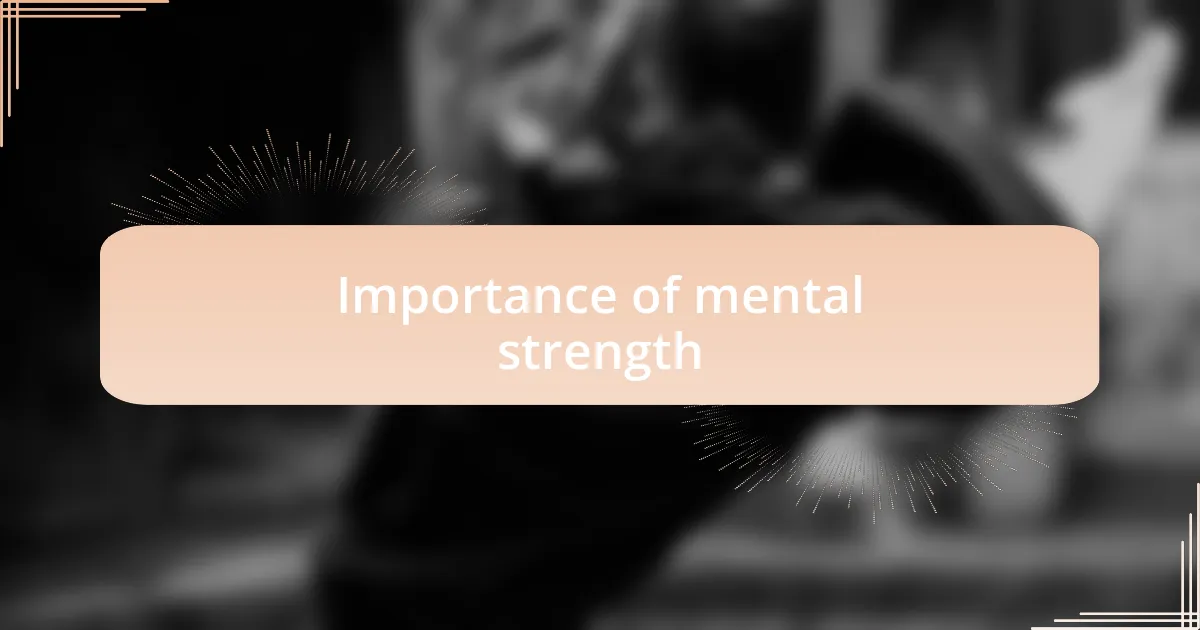
Importance of mental strength
The importance of mental strength in breakdancing cannot be overstated. I’ve seen firsthand how a moment of self-doubt can derail an entire performance. There was a time when I entered a freestyle battle feeling great, only to feel frozen at the sound of the beat. It was in that instant I realized that while technique is crucial, mental resilience is what really sets apart those who shine on stage.
When faced with setbacks, it’s mental strength that allows us to bounce back, learn, and grow. I remember once practicing for weeks for a showcase. On the day of the event, I tweaked my ankle in the warm-up. It would have been easy to give up, but I chose to redirect my focus and stayed engaged with the moment. That determination not only helped me perform but also cemented the belief that my mindset can be my biggest ally.
In many ways, mental strength shapes our experiences in breakdancing. How do we learn to stay calm under pressure? For me, it’s about developing rituals—those little things I do before I step on stage that ground me. Whether it’s taking deep breaths or visualizing the crowd cheering, these practices help transform nervous energy into a powerful performance. It’s this inner fortitude that defines my journey and continues to fuel my passion for dance.
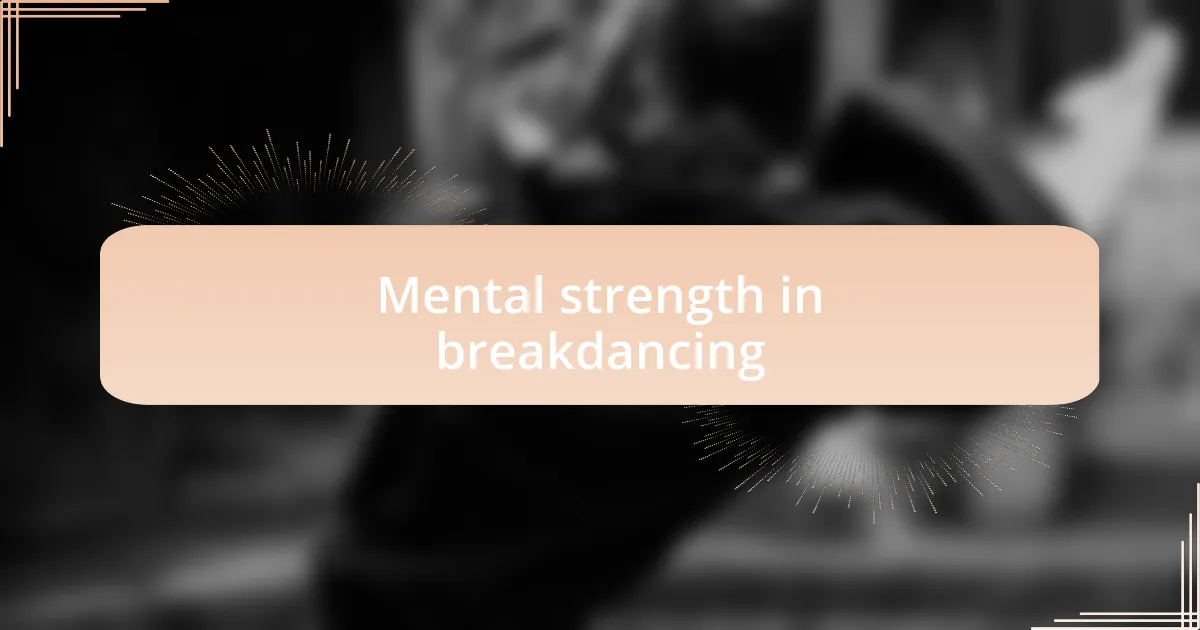
Mental strength in breakdancing
I’ve often struggled with the intimidating pressure of battles, where every move feels like it’s under scrutiny. One time, I watched a fellow B-boy freeze mid-routine, and it hit me—he wasn’t lacking talent, but perhaps confidence. In those moments, I realized mental strength isn’t just about resilience; it’s also about believing in oneself and embracing the dance floor fearlessly.
Preparation plays a significant role in fostering that mental muscle. I have a specific playlist that I listen to before battles, songs that pump me up and shake off negativity. Listening to those tracks allows me to slip into a focused mindset, transforming potential anxiety into raw energy. Can you feel the difference when your mind is right? I certainly can, as it sets the tone for what’s to come.
Reflecting on my journey, I’ve come to understand that failures are part of the growth process. I remember losing a fierce battle, and instead of letting that define me, I used it as fuel for my next practice. How do I flip disappointment into determination? By reminding myself that every challenge is an opportunity in disguise. It’s this shift in perspective that deepens my connection with breakdancing, making each session a path towards improvement and empowerment.
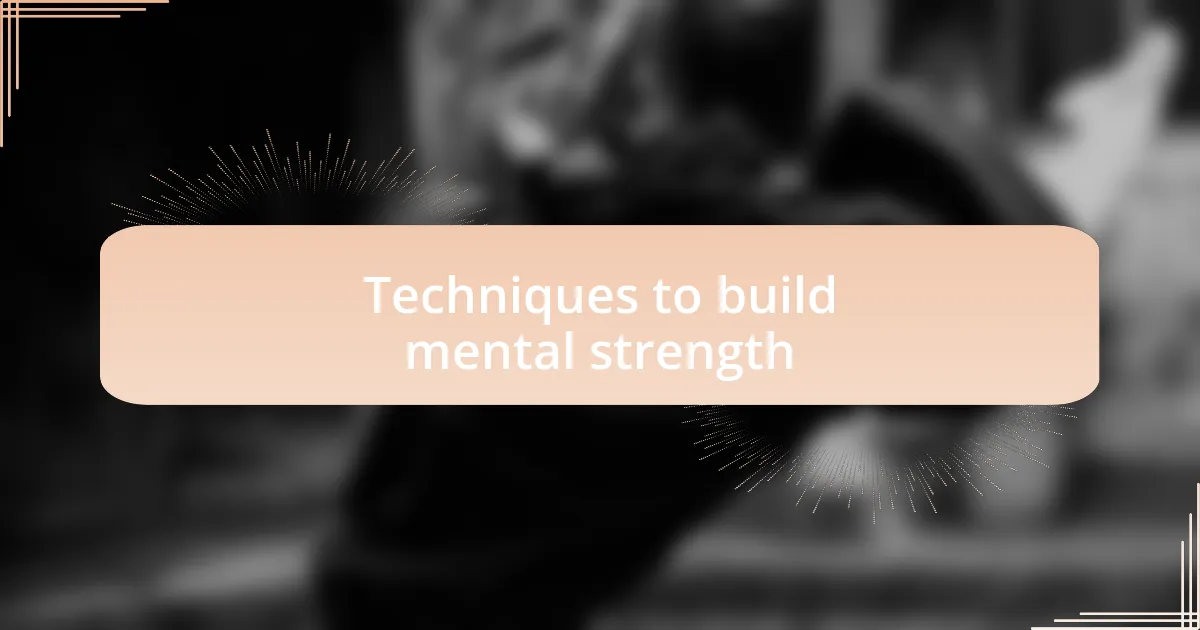
Techniques to build mental strength
One technique I’ve found incredibly useful is visualization. Before stepping onto the floor, I mentally rehearse my moves, going through each transition and freeze. It’s as if I’m dancing in my mind, and by the time I start battling, I feel like I’ve already won. Have you ever tried this? The more vividly I imagine my success, the more confident I become when it’s time to perform.
Another method I’ve embraced is the practice of mindfulness. After a tough session, I take a moment to breathe and reflect—not just on what went wrong but also on what felt good. This reminds me that, regardless of the outcome, I am constantly evolving as a dancer. It’s much easier to maintain a positive outlook when I acknowledge both my efforts and achievements. Have you given yourself the time to appreciate your own progress lately?
Finally, surrounding myself with supportive peers plays an essential role in building mental strength. I remember feeling discouraged after struggling with a challenging move, but my crew rallied around me, offering encouragement and tips. Their faith in my potential reignited my own belief in myself. Isn’t it empowering to know that we can lift each other up? By fostering that sense of community, I find the courage to tackle my weaknesses head-on and break through mental barriers.

Overcoming self-doubt in battles
When I step into a battle, self-doubt can creep up like a shadow, making me question my skills and worth. I still remember my first major competition; as I watched other dancers nail their routines, I felt like an imposter. In those moments, reminding myself of past victories—no matter how small—helps quiet that inner critic. Have you experienced that moment of doubt too? It’s all too common in the dance community.
One powerful technique I’ve found is to shift my mindset from comparison to appreciation. Instead of fixating on what others are doing or how I might fall short, I focus on my unique style and strengths. I often think about how every dancer brings something different to the floor. During a recent battle, rather than being intimidated by my opponent, I celebrated my individuality and remembered why I love breakdancing. Isn’t it liberating to embrace what makes you, you?
To confront self-doubt head-on, I’ve learned to welcome failure as part of the process. I recall a battle where I missed a crucial transition, and it felt crushing in the moment. However, I took a step back and asked myself what I could learn from it instead of dwelling on the mistake. Each stumble is a stepping stone to grow stronger, both mentally and physically. Does that resonate with you? Embracing failure allows us to approach each battle not just as a test, but as an opportunity for growth.
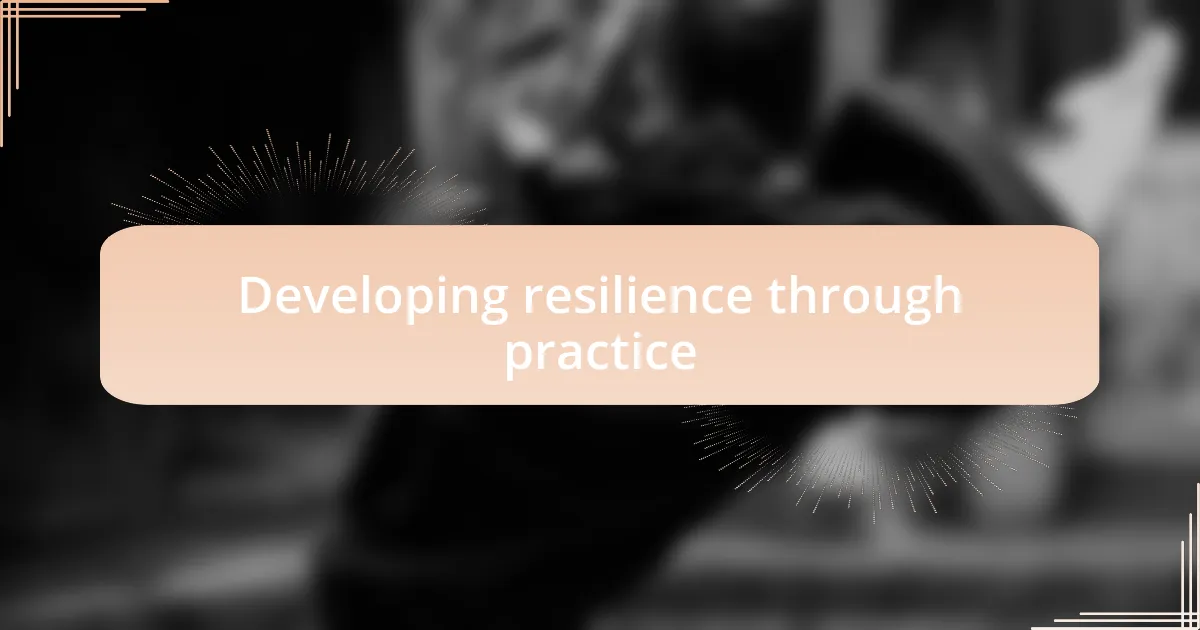
Developing resilience through practice
Practicing consistently has been my anchor in building resilience. There were days when I entered the studio feeling drained or demotivated, yet pushing through those sessions is where I found my strength. I vividly remember a rainy afternoon, battling against my own fatigue, when I finally nailed a move that had eluded me for weeks. That moment was not just about the move—it was about proving to myself that persistence pays off.
When I think about resilience, I often recall a specific moment during a training session where I fell multiple times trying to execute a challenging freeze. Each fall was a reminder of my limits, but instead of letting frustration take over, I embraced the challenge. I started counting every failure as a lesson, and in those moments, I discovered that every struggle shaped my ability to bounce back stronger. How many times have you had to pick yourself up after a setback?
Developing resilience isn’t just about the physical practice; it’s also a mental game. I regularly visualize myself in battle scenarios, tackling tough moves and unexpected surprises. This mental rehearsal has transformed my approach to competition. The more I practice confronting imagined challenges in my mind, the easier it becomes to handle them in real life. Have you tried visualizing your own battles? It could be a game-changer in how you process pressure and uncertainty on the dance floor.
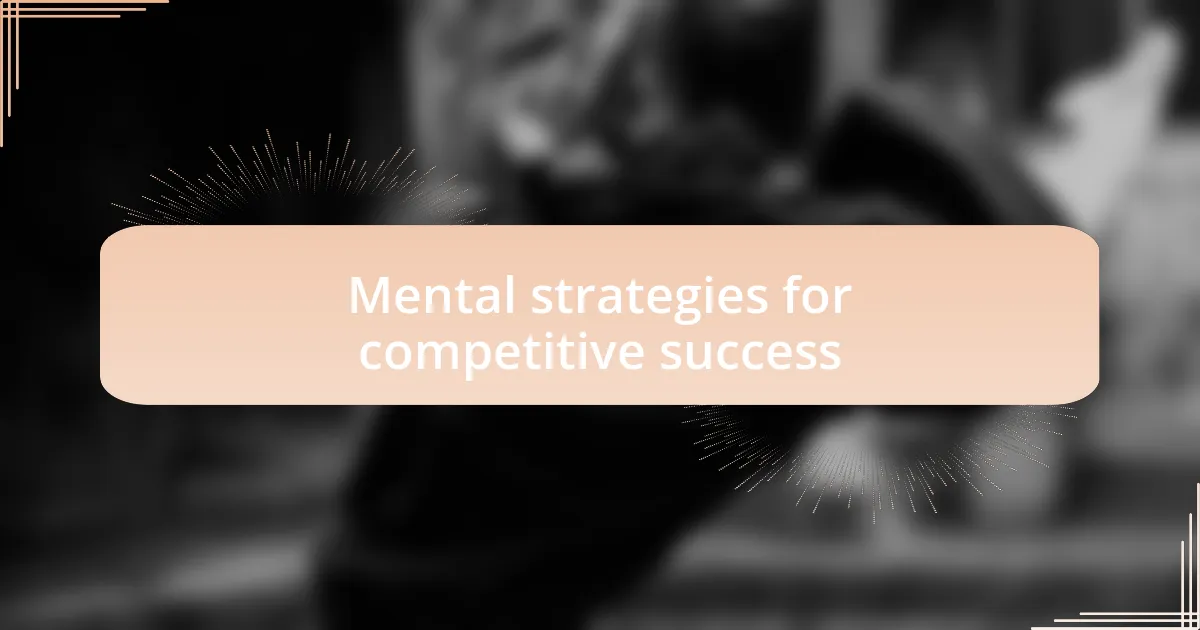
Mental strategies for competitive success
Mental strategies play a crucial role in competitive success, especially in breakdancing. I often find myself employing positive self-talk before stepping onto the dance floor. Instead of focusing on the fear of losing, I remind myself of past victories and the hard work I’ve put in. This mental affirmation not only boosts my confidence but also quiets the nagging doubts that can creep in during crucial moments. How do you prepare your mind before a battle?
Another strategy that has served me well is mindfulness. During intense competitions, I take a moment to ground myself, focusing on my breath and the rhythm of the music. This practice helps clear my mind, allowing me to stay present rather than get caught up in the pressure of the moment. I remember a time I faced a particularly fierce opponent; by centering myself, I could appreciate the experience and let the dance flow naturally. Have you ever tried mindfulness techniques to enhance your performance?
Moreover, setting specific mental goals has made a significant difference in how I approach competition. For instance, I determine ahead of time the key moves I want to execute rather than getting lost in the moment. This intentionality provides a roadmap and helps me maintain focus amidst the chaos of a battle. I can recall one bout where I had a mental checklist of goals—each tick of that list fueled my energy and determination. What strategies do you find help maintain your focus under pressure?